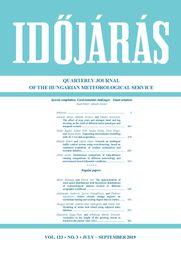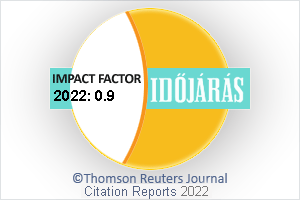IDŐJÁRÁS - angol nyelvű folyóirat
Vol. 123, No. 3 * Pages 265–408 * July - September 2019
 |
Special compilation: Environmental challenges – Smart solutions |
 letöltés [pdf: 3299 KB]
letöltés [pdf: 3299 KB]
Anomalies in the length of the growing season in Poland in the period 1966–2015
Katarzyna Szyga-Pluta and Arkadiusz M. Tomczyk
DOI:10.28974/idojaras.2019.3.8 (p. 391–)
Katarzyna Szyga-Pluta and Arkadiusz M. Tomczyk
DOI:10.28974/idojaras.2019.3.8 (p. 391–)
IDŐJÁRÁS folyóirat

Az IDŐJÁRÁS a HungaroMet Nonprofit Zrt. negyedévenként megjelenő angol nyelvű folyóirata
Megrendelhető a journal.idojaras@met.hu címen.
A szerzőknek szánt útmutató itt olvasható.
Megrendelhető a journal.idojaras@met.hu címen.
A szerzőknek szánt útmutató itt olvasható.









